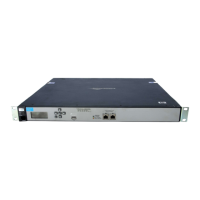CLI commands
no qos
Disables QoS for this profile.
Four traffic queues are provided based on the WME standard. In order of priority, these queues
are:
1: Voice traffic
2: Video traffic
3: Best effort data traffic
4: Background data traffic
Each QoS priority mechanism maps traffic to one of the four traffic queues. Client stations that do
not support the QoS mechanism for the profile they are connected to are always assigned to queue
3.
Important: Traffic delivery is based on strict priority (per the WME standard). Therefore, if
excessive traffic is present on queues 1 or 2, it will reduce the flow of traffic on queues 3 and 4.
802.1p Traffic from 802.1p client stations is classified based on the VLAN priority
field present within the VLAN header. When this mechanism is selected,
the service controller will advertise WME capabilities, enabling WME
clients to associate and take advantage of them. This setting has no effect
on legacy clients.
Note: To support 802.1p, the wireless profile must have a VLAN assigned to
it, which means that client station traffic is forwarded onto the LAN port
only.
vap0 to vap3 Allows a specific priority level to be specified for all traffic on a VAP (VSC)
profile. This enables client stations without a QoS mechanism to set traffic
priority by connecting to the appropriate SSID.
If you enable this priority mechanism, it takes precedence regardless of the
priority mechanism supported by associated client stations. For example,
if you set SSID-based low priority for a profile, all devices that connect to
the profile have their traffic set at this priority
Mapping to the traffic queues is as follows: vap0 or very-high=queue 1,
vap1 or high=queue 2, vap2 or normal=queue 3, vap3 or low=queue 4
diffsrv Differential services is a method for defining IP traffic priority on a per-hop
basis. The Differential Service bits are defined in RFC2474 and are
composed of the six most significant bits of the IP TOS field. These bits
define the class selector code points which the CN320 maps to the
appropriate traffic queue. (default setting)
tos The IP TOS (type of service) field can be used to mark prioritization or
special handling for IP packets.
upstream diffserv tagging
Supported on: MSM710 MSM730 MSM750 MSM760 MSM765zl
upstream diffserv tagging
Enables upstream diffserv tagging.
no upstream diffserv tagging
Disables upstream diffserv tagging.
2-99

